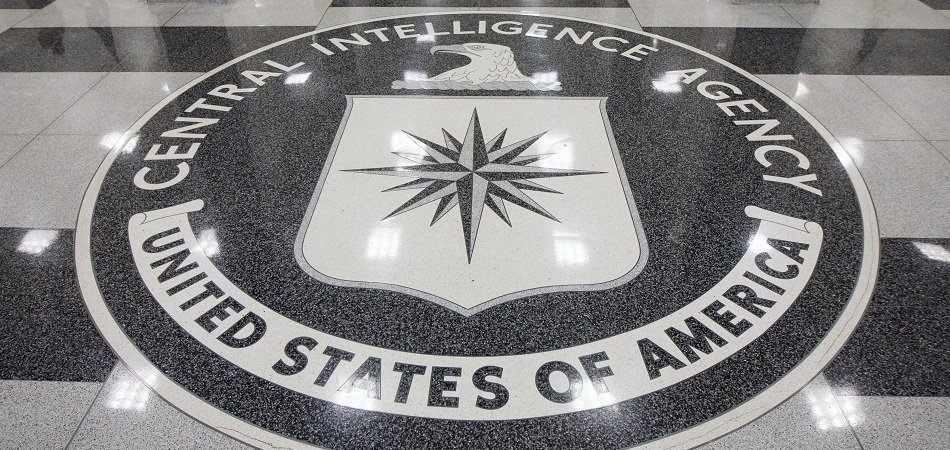
It is clear the United States government has recently taken a strong stance in attempts to proliferate artificial intelligence technology innovations for the United States Department of Defense. There are those who believe that the US, Russia, and China have entered into a modern day Space Race-style competition to develop and harness artificial intelligence technologies.
We spoke on the international dynamics of AI innovations at play between the US and China at a United Nations event in Shanghai on AI and national security.
In this article, we’ll take a look at some of the known applications the Central Intelligence Agency of the United States, or CIA, uses and where it’s generating useful state intelligence today. We’ll do this by covering four real-world use cases from four B2B AI vendors that claim to offer artificial intelligence solutions applicable for national intelligence and defense.
We’ll run through uses cases for the following capabilities of Artificial Intelligence in the CIA:
- Discovering threats and thwarting planned attacks
- Neutralizing cyber attacks that come in through email
- Surveying areas via satellite
- Identifying and predicting social unrest in a region
Some information on these products, companies, and company leaders appear to be intentionally obscured for security purposes. The CIA likely uses the applications covered in this report, although in some instances we could only infer this. Nevertheless, this report will discuss the current capabilities of AI at the disposal of the CIA.
We begin our analysis with general insights about how the CIA is using AI:
Artificial Intelligence at the CIA – Insights Up Front
The CIA seems to find modern innovations in AI useful for security and intelligence purposes. As a result, the CIA has funded numerous AI projects from private companies with the intent to use their resulting applications when they’re completed. Dawn Meyerriecks, the CIA’s Deputy Director for Technology Development, recently stated at the 2018 Intelligence and National Security Summit in Maryland, “the CIA currently has 137 different AI projects, many of them with developers in Silicon Valley.”
In fact, the In-Q-Tel venture fund is a branch of the CIA designed to deliver venture funding to promising security and defense companies the CIA finds useful to its current and future operations. As a point of reference, from 1999 to August 2006, In-Q-Tel had reviewed more than 5,800 business plans, invested approximately $150 million in more than 90 companies, and delivered more than 130 technology solutions to the intelligence community.
This look at the current capabilities of AI in the CIA will begin with Palantir. Palantir is one of the three companies detailed in this report that received funding for In-Q-Tel.
Discovering Threats and Thwarting Planned Attacks
Palantir offers Palantir Defense, which it claims can help government organizations analyze and sort large amounts of diverse data from numerous sources to alert users of possible relationships indicative of suspicious behavior worth monitoring using predictive analytics.
Palantir Defense enables intelligence officers to harness the torrents of raw data collected across the US DoD and make informed operational plans and strategic decisions based on the unknown patterns present in the unsynchronized data.
Palantir claims Palantir Defense can process and discern patterns from unstructured message traffic, structured identity data, link charts, spreadsheets, telephony, documents, network data, sensor data, and full motion video.
Predictive analytics software is trained on a type of data to predict outcomes of a situation. As an example, we can take emails sent from one person to another that may or may not result in an attack on a military base.
The machine learning model behind the software would be trained on millions of emails recovered from people before an attack on a base, a portion of emails from the attacks and a portion from the general public.
The data would then be run through the software’s machine learning algorithm. This would have trained the algorithm to discern which pattern of data points within the email correlate to suspicious words or phrases, or time of sends one might perform when coordinating an attack on a military base with other insurgents.
The software would then be able to predict when it has processed emails that likely suggest a user is plotting an attack.
Below is a short 3-minute video demonstrating how Palantir was integrated into the LAPD workflow to synchronize all the data from their various databases at their disposal and make predictions and suggestions on potentially relevant pieces of suspect data:
Palantir was funded early on by In-Q-Tel and is currently in use by the CIA, FBI, LAPD and other US government organizations. Author Mark Bowden attributes Palantir as a key factor in the discovery and hunt for infamous terrorist leader Osama bin Laden.
The US Marines integrated Palantir’s software into its operating systems in 2011 during the War in Afghanistan to find bomb-making terrorist cells. According to Palantir’s case study, Analysts detected correlations between weather data, command wire IED attacks and linked biometrics collected off of explosive devices to individuals and bomb-making networks.
Nathan Gettings is CTO at Palantir. We could not find any information on Getting’s academic history; as a key mind behind the United State’s current intelligence software, Getting’s past seems to be intentionally obscured for security purposes.
Neutralizing Cyber Attacks
Cylance offers CylanceProtect, which it claims can help office security managers identify and neutralize cybersecurity attacks by emails laced with malware using natural language processing and predictive analysis.
Cylance partnered with InQTel in 2016 and as a result, CylanceProtect is currently used by the CIA to prevent email phishing scams from compromising US intelligence.
Where Palantir took broad stores of data and correlated patterns between the data to make predictions, CyclanceProtect focuses simply on data from emails and other forms of digital communication to predict a dangerous email and then neutralize it.
Cylance claims the machine learning model behind the software was trained on millions of emails, some containing malware and phishing scams. These emails would then be run through the software’s machine learning algorithm and labeled as a safe email or a suspicious email likely to contain malicious programs.
This would have trained the algorithm to discern which data points correlate to both safe emails and emails looking to steal information or plant malware on the opener’s computer. The software would then be able to determine whether or not an email arriving in an inbox needed to be neutralized or not.
This 3-minute video demonstrates how Cylance detects malware and neutralizes it:
In a case study of their software conducted and validated by Forrester Consulting, Cylance claims to have helped an anonymous county government of the United States reduce security risk from malware in their office and increase security personnel productivity.
According to the case study, the county “saw risk-adjusted ROI and benefits worth $7,699,716 versus costs of $2,195,721 over three years” and “IT and security full-time equivalent (FTE) productivity reduced the time needed to manage the cybersecurity process significantly, helping the IT and security employees to be 40% more productive.”
Cylance also lists GameStop, the University of West Florida, and Panasonic as some of their past clients.
Ryan Permeh is Chief Scientist and co-founder at Cylance. He holds a degree of unknown achievement from the Milwaukee School of Engineering in Computer Science. Previously, Permeh served as Chief Scientist at McAfee Security.
Surveying Areas via Satellite
Orbital Insights offers a product that conducts geospatial analytics on space satellite images of large-scale areas using computer vision. The product is intended to count and measure roads, airplanes, clouds, smog, haze, lakes, land, buildings, oil tanks, vehicles, and other objects and in order to track their movements, determine normal patterns of activity, detect anomalies, and aid in conducting CIA mission planning.
We have inferred the CIA uses Orbital Insights currently, as it received $20 million in funding from the InQTel venture fund in 2016. Additionally, InQTel claims Orbital Insights works with “more than 60 asset management firms, several US government agencies, and two global non-profit organizations,” although would not comment on the identity of the several US government agencies.
We can infer the machine learning model behind the software was trained on millions of satellite images of Earth’s surface taken at various angles, altitudes, weather patterns and in various lighting conditions. The various objects within the images would have been labeled, such as trees, lakes, snow, clouds, and cars.
As an example, an agent looking to monitor the traffic patterns of vehicles coming and going from a military installation would identify the objects they wanted Orbital Insights to monitor. These labeled images would then be run through the software’s machine learning algorithm. This would have trained the algorithm to discern the sequences and patterns of 1’s and 0’s that, to the human eye, form the satellite image of a car leaving or entering a parking lot.
The user could then upload additional images of cars entering a parking lot that are not labeled into Orbital Insights. The algorithm behind the software would then be able to establish a pattern of the regular flux of cars coming and going from the lot. If an anomaly were to arise, such as more cars or less cars than normal in the lot, the system would alert a human user of this change.
Below is a short 3-minute video depicting the CEO of Orbital Insights describing the various use cases of the company’s product:
Orbital Insights claims to have helped Walmart track the parking lots of about 5,100 Walmart & Sam’s Club locations in the United States to understand the relationship of retail traffic trends and revenue. According to the case study, Walmart discovered a 1.75% decline in global lot traffic in 2018.
James Crawford is CEO at Orbital Insights. He holds a PhD in Computer Science from the University of Texas, Austin. Previously, Crawford served as the Engineering Director of Google Book, a computer vision and NLP service by Google.
Identifying and Predicting Social Unrest in a Region
Stabilitas offers a namesake software which it claims can help organizations predict social unrest in a region using sentiment analysis and predictive analytics. Stabilitas aggregates news articles published online, weather reports, social media, and private databases to identify and display regions on the map with high-risk events that may result in an unsafe environment.
We can infer the artificial intelligence behind Stabilitas was trained on thousands of news articles published online, weather reports, social media, and private database entries labeled as an unsafe environment, such as riots, numerous killings, political upheaval, or natural disasters.
The labeled text data would then be run through the software’s machine learning algorithm. This would have trained the algorithm to discern the chains of article text that a human expert in regional destabilization and public sentiment might interpret as an article describing a violent situation or social unrest.
A user could then query the software for a given region and the algorithm behind the software would then be able to gauge the current stability and socio-political sentiment of the region, find relevant texts, social media posts, and other forms of data in the region and populate that data for the user to see.
Stabilitas likely then comes up with a confidence interval on how likely the violent events it has recorded might correlate to additional violent events of the same nature in the future. Stabilitas displays the dangerous events in the region and the software would alert the searching user via a popup display.
Below is a short 2-minute video demonstrating how Stabilitas gauges the dangerousness of a region:
Stablitas lists McDonalds, Harvard University, and Merck as some of their past clients.
Jason Flaks is CTO at Stabilitas. He holds a Masters in Music Engineering from the University of Miami. Previously, Flask served as Senior Program Manager Lead for Microsoft’s Kinect on the Xbox 360 and later the Senior Director of Product & Engineering, Speech Analytics for Marchex.
It is not fully clear if the CIA uses this technology at present; however, it can be partially inferred through both of the founder’s decorated military career, their schooling at WestPoint, and Stabilitas’s activity in the 2018 Intelligence Summit, where Flaks spoke alongside Dawn Meyerriecks, the CIA’s Deputy Director for Technology Development.
Header Image Credit: War on the Rocks







